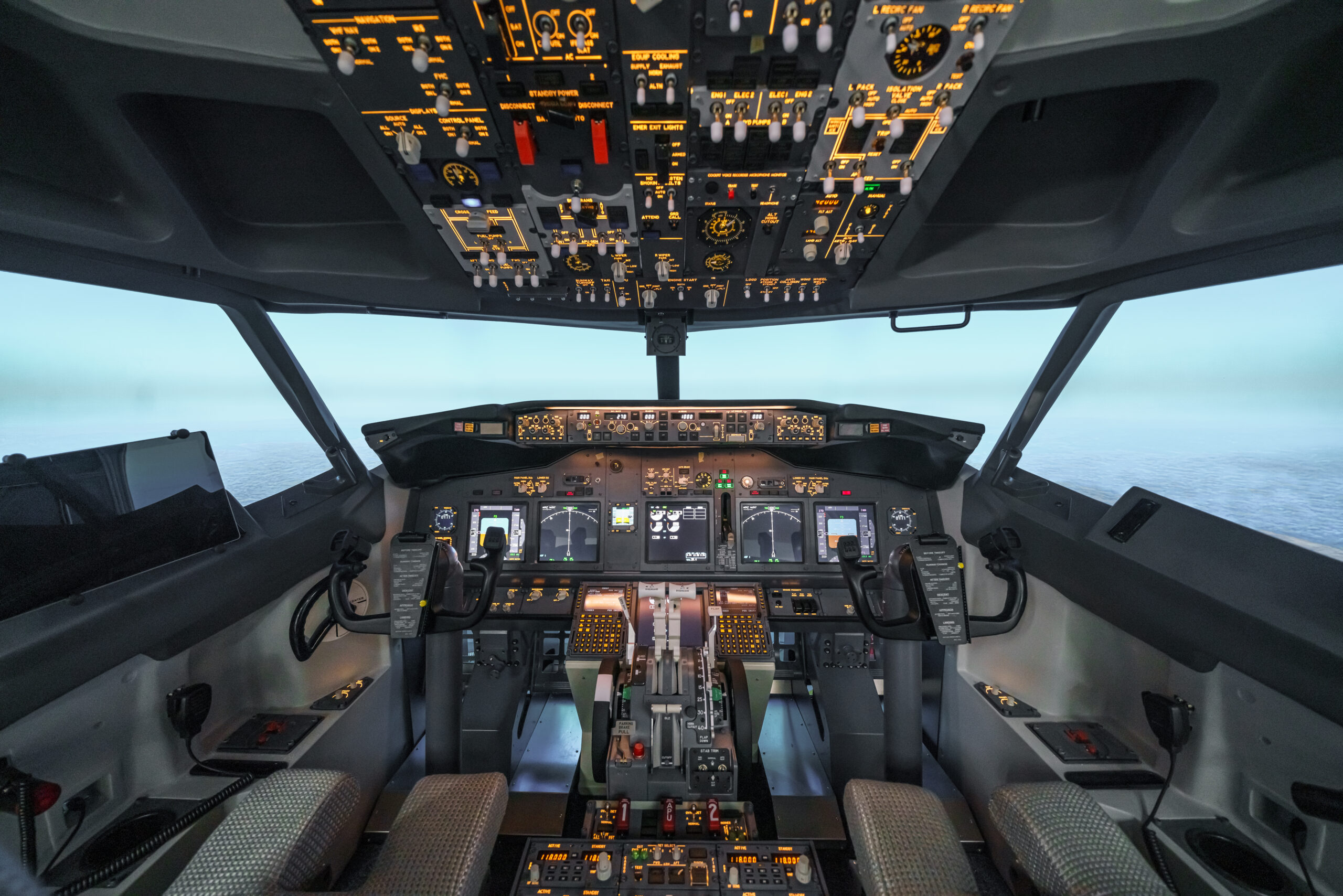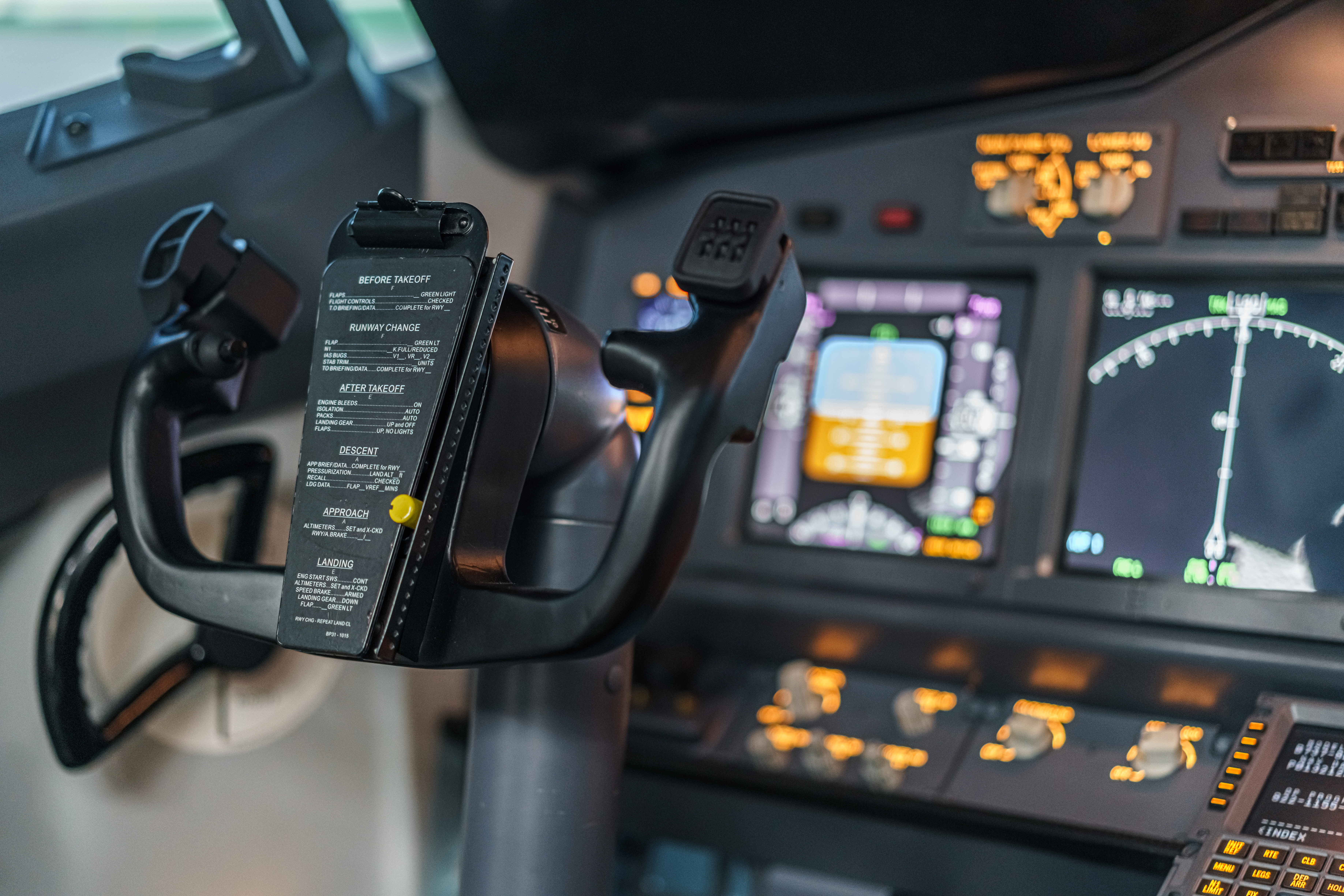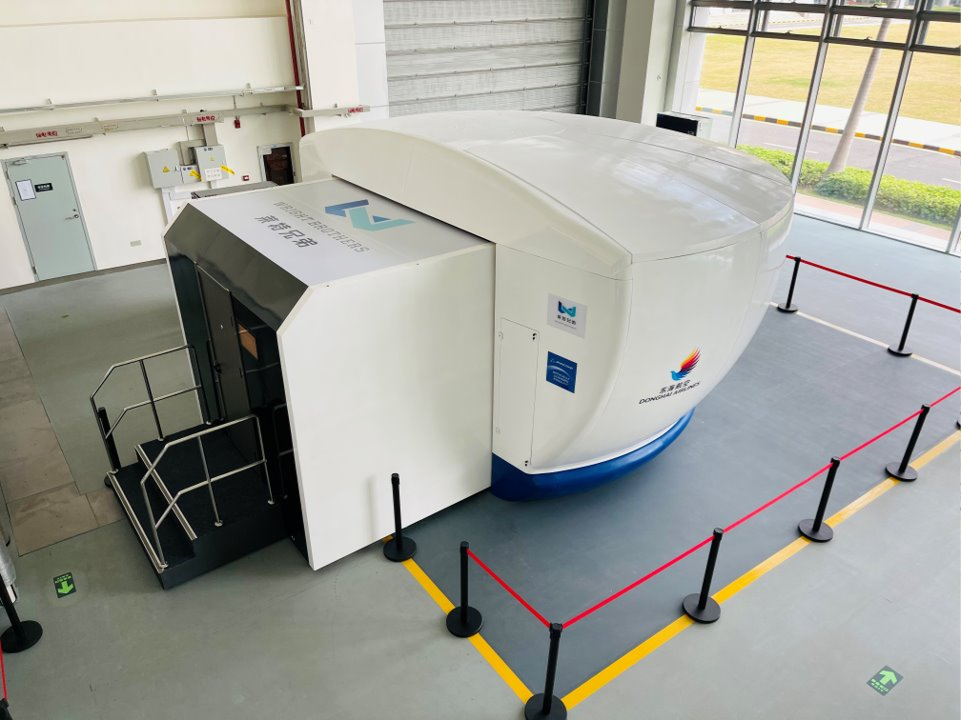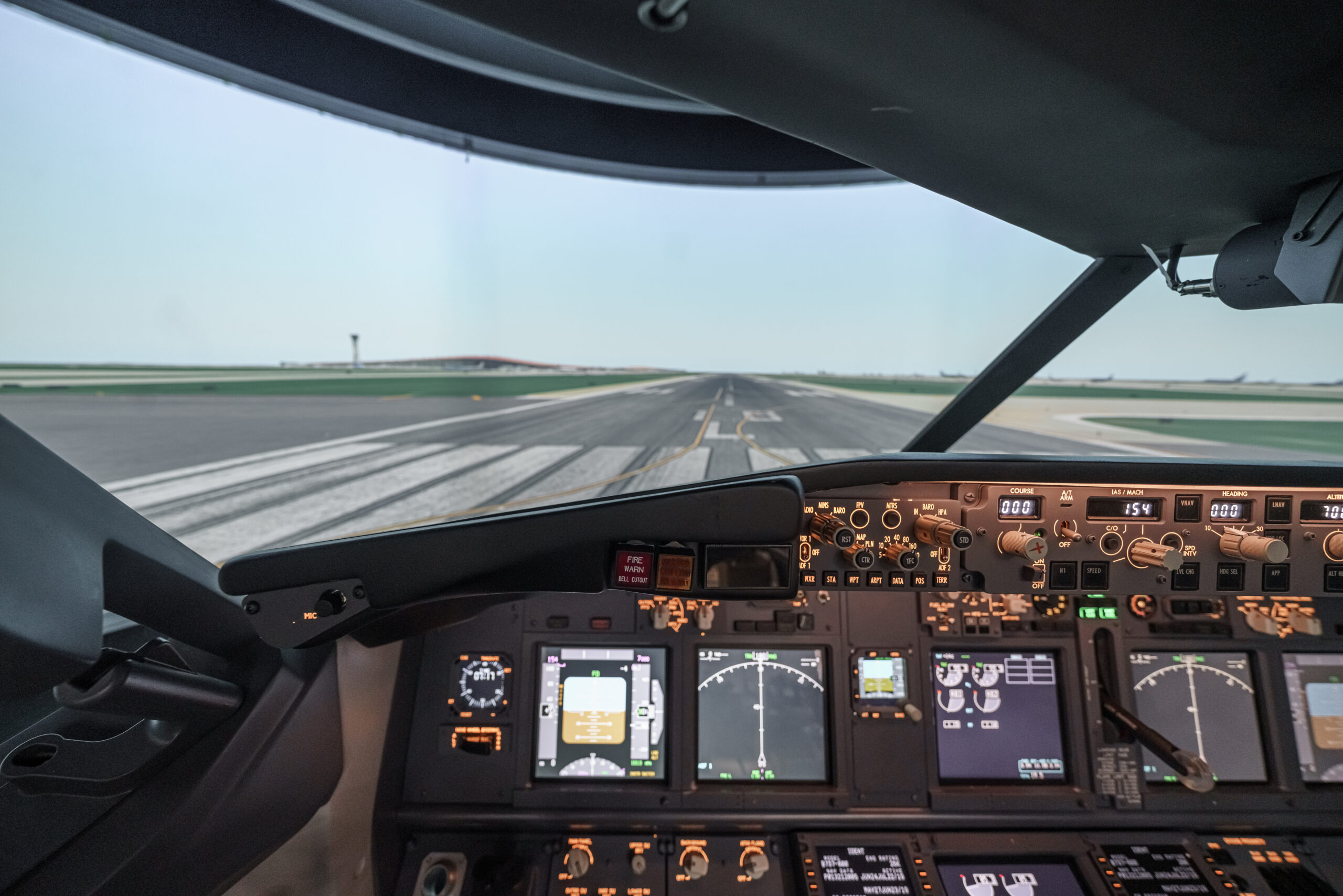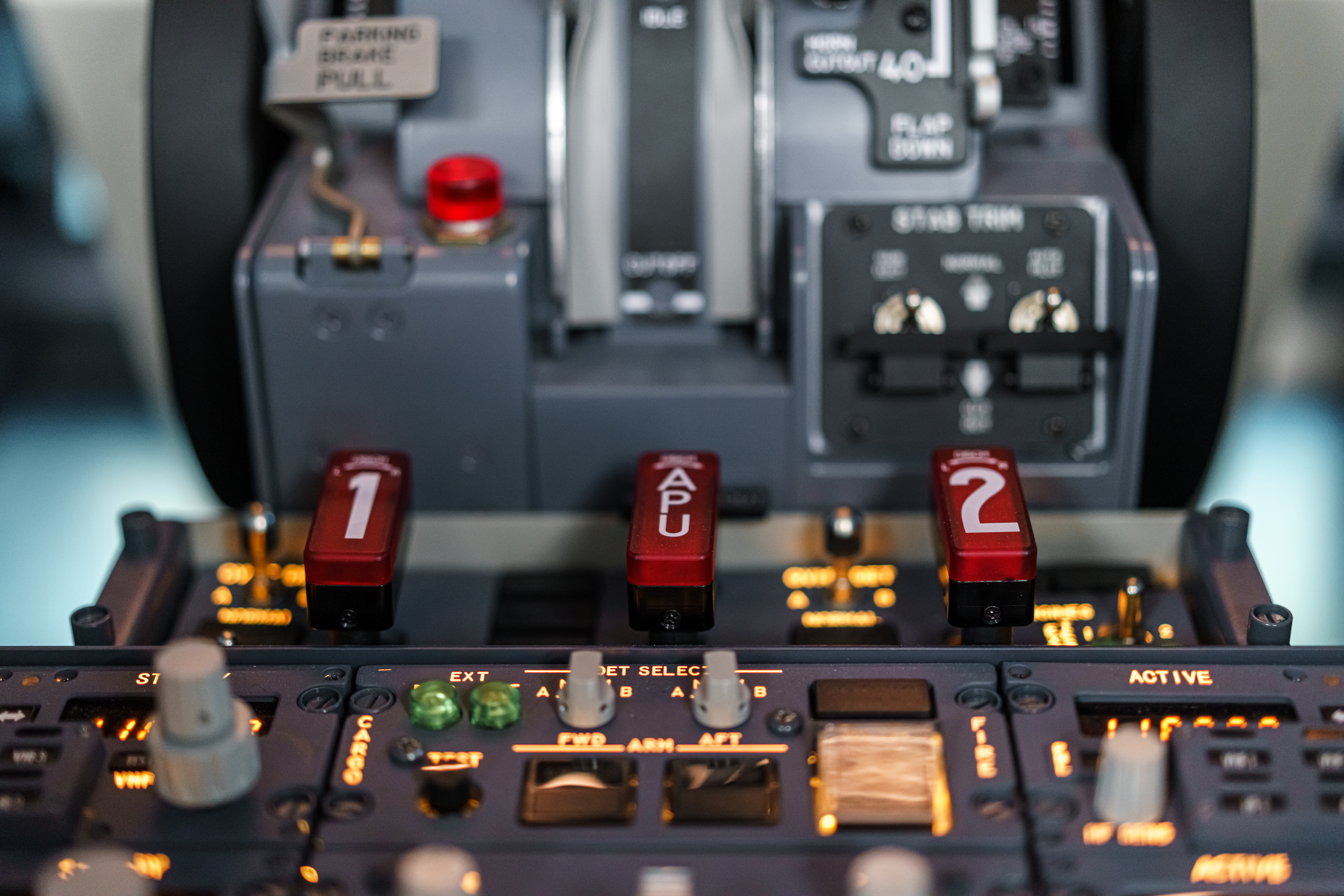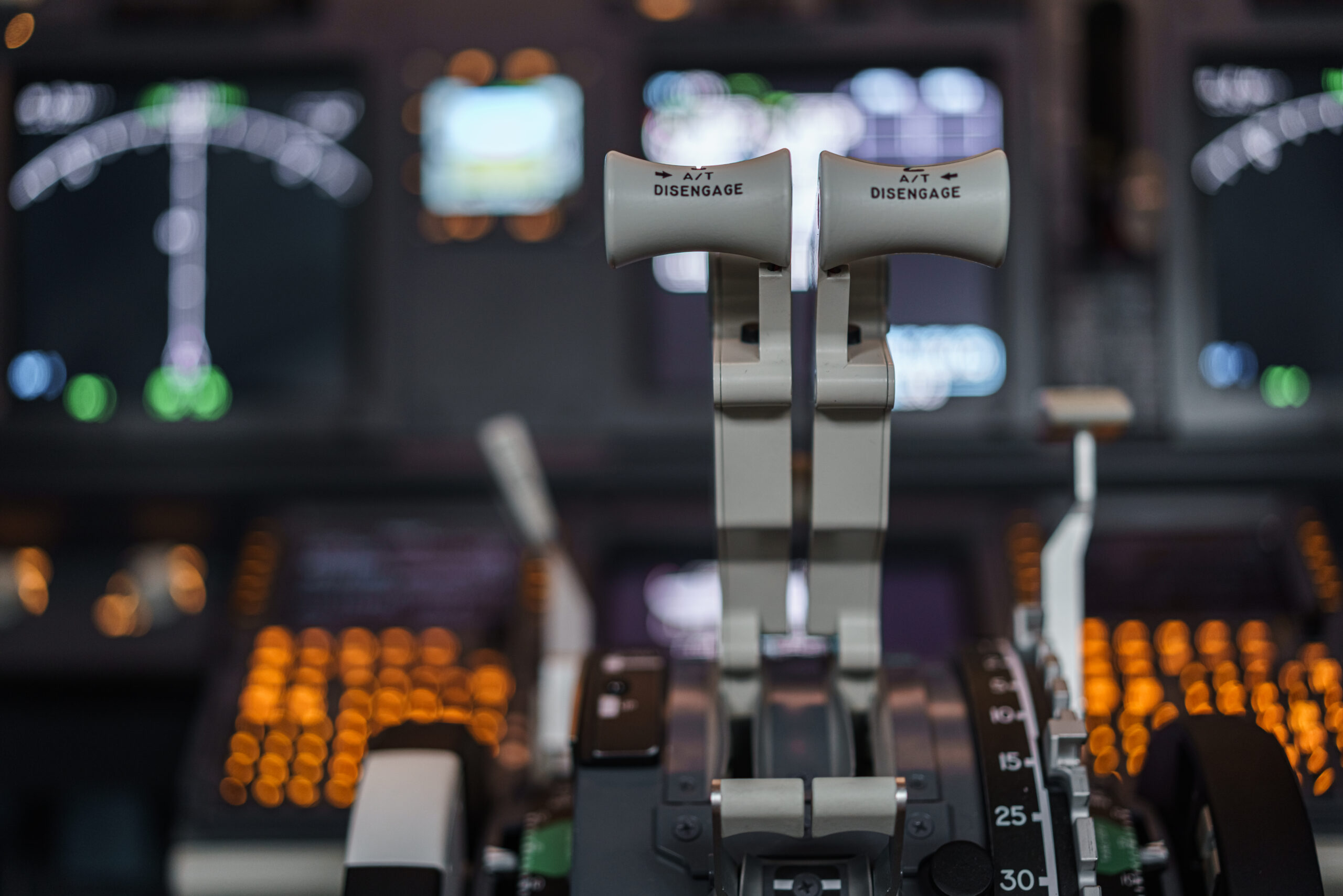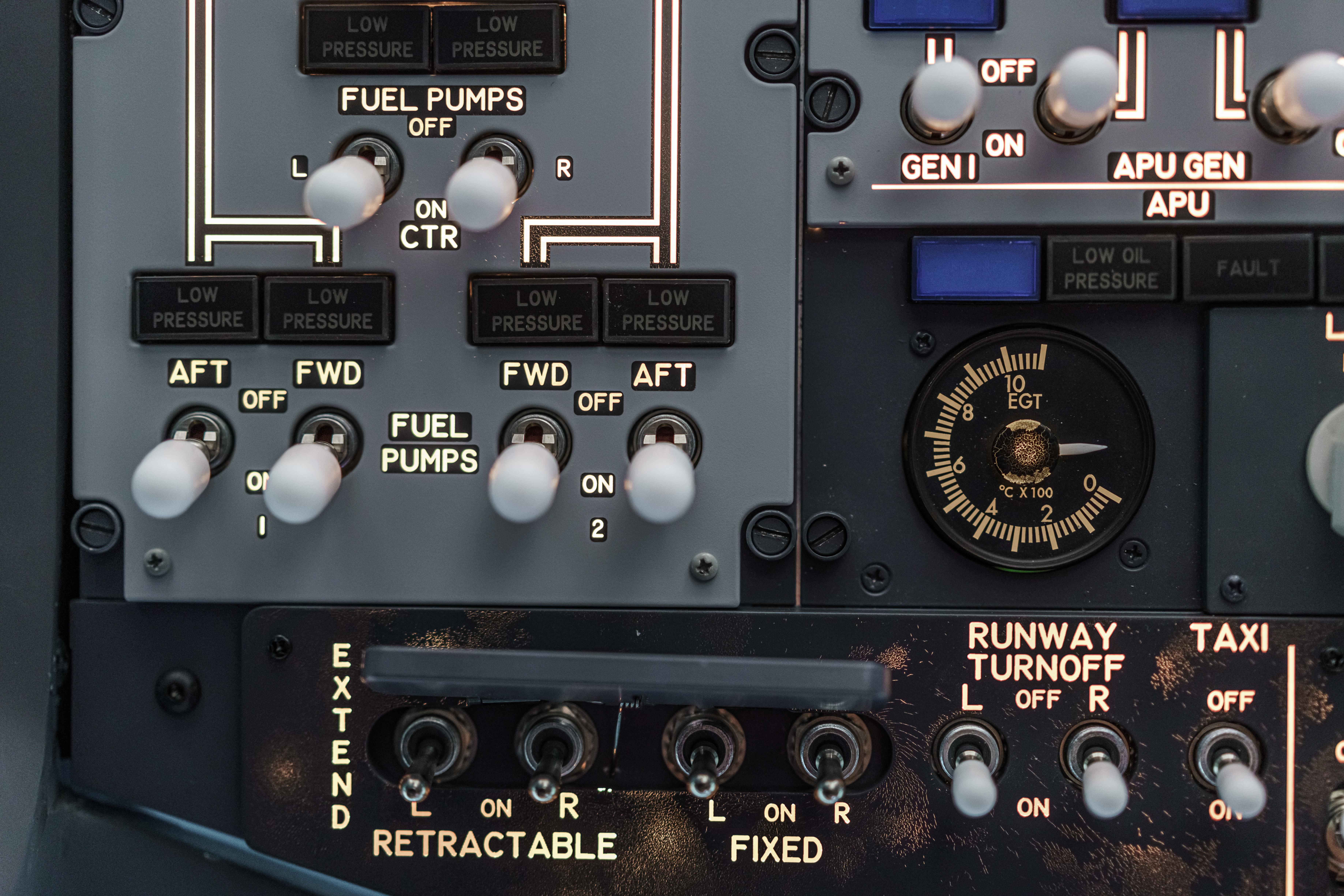WB737
WB737NG
Our WB737 is based on the Boeing 737-800NG and is a type specific replica of the complete original aircraft flight deck. The simulator can be built and configured in the fidelity levels FNPT II + MCC, FTD 1 and FTD2 (EASA Standard) and FTD Level 4 and 5 (FAA Standard).
Boeing 737 Max 8 is currently under development. If you are interested in being our launch customer, we offer attractive conditions.
Main features
- WBFT in-house developed simulation software
- Corresponding original Boeing Data Pack
- Aft Cabin: optional open or enclosed
- User friendly, intuitive IOS, both for monitor and/or tablet
- Direct Projection or optional Collimated Display
- Laser Projection by default
- Simulated fully functional FMS, rehosted FMS available on request
- Three channel Control Loading System (rudder pedals and pitch and roll for the column yoke)
- Different IG option
- Stereo Sound System
- Global scenery and navigation database
- QAR replay functionality
- Cat III C capable
- Possibility for UPRT
Training possibilities
- Type Rating Training (Up to 50% hours credit)
- Jet Orientation Course (JOC)
- Multi-Crew Cooperation (MCC) Training
- Instructor Course, SFI/TRI Training
- IFR Training/Check
- Proficiency Check
- Grading & Assessment
- Difference Course
- Cross-Crew Qualification (CCQ)
- LOFT Training
- UPRT
- Recurrent Training (available by approval of NPA 2020-15)
In-house WB737NG Panorama
Technical Details
Cockpit
WB737NG FTD flight deck is a full-scale replica of the original Boeing 737NG-800 airplane that ensures the interior trim pieces, panels, and instruments are highly accurate in size and shape.
The Flight Controls of the WB320 simulator is a well-developed and reliable system, having undergone thousands of hours of testing and fine-tuning to replicate the authentic hydraulic sensations of an actual aircraft.
Instrument and Overhead Panels are all come with OEM-grade simulated parts. WBFT has complete know-how and production of the hardware so that to assure the solid supply of the spare parts to the end user.
The Main Instrument Panel (MIP) of the WB737NG simulator is constructed using high quality custom LCD displays that can be controlled from the Display Control Unit (DCU). All graphical representations, textual displays, and logical operations are simulated to match those found in the Flight Crew Operating Manual (FCOM). The simulator operates on a constant 400Hz high frequency from high-performance WBFT simulation software, which guarantees that all displays animate smoothly during the flight.
Visual System
The visual system varies for different requirements of certificate levels. WBFT has integrated an in-house developed direct projection visual system for standard FSTD and optional for advanced collimated display system with a dome-shaped mylar screen for higher level or full flight simulator.
A default direct projection system is a cylinder-shaped, wrap-around screen with 180*40 degree FOV with a fully enclosed compartment that avoids any interruptive lights and noises that affect the training activities.
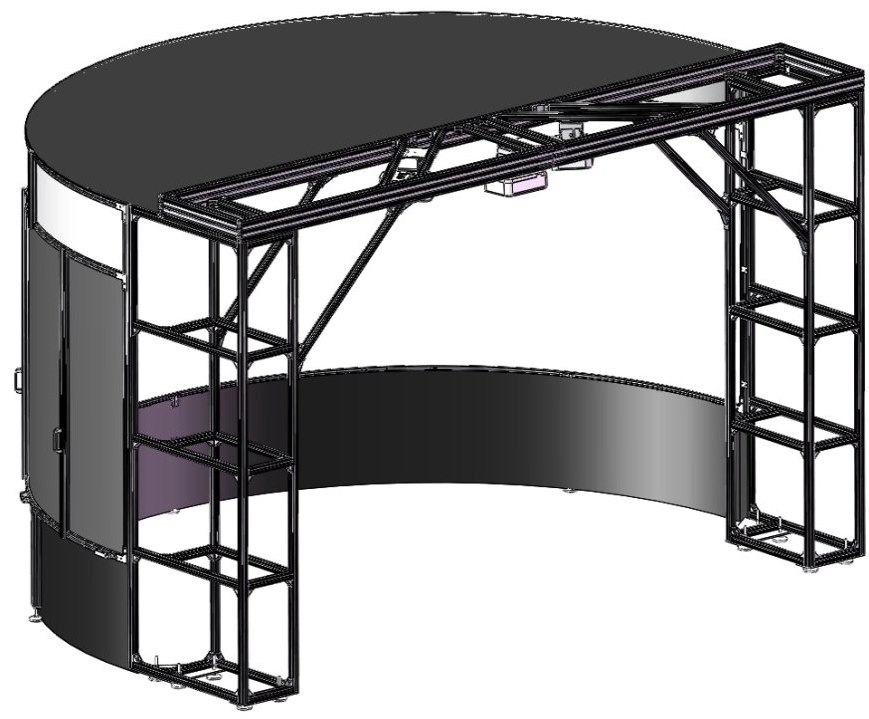
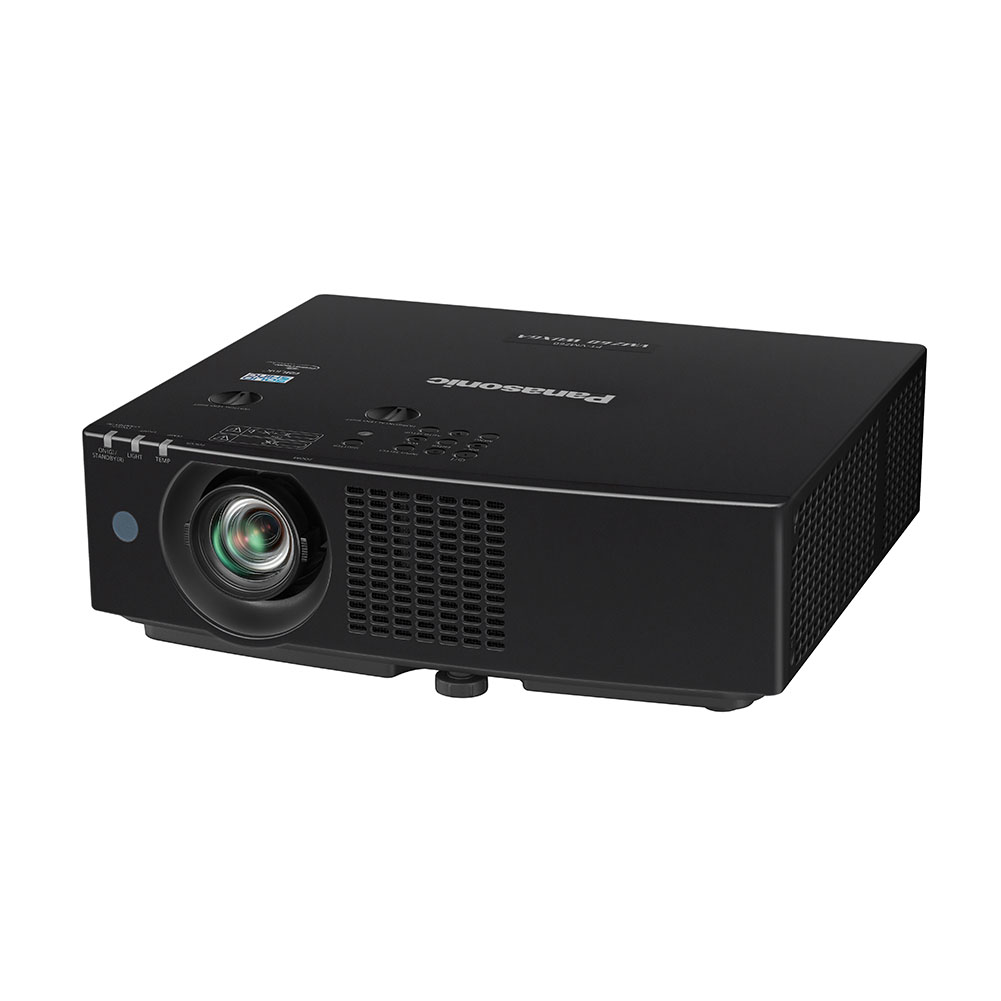
FNPT || visual system uses three sets of full HD 1920*1200 Panasonic laser projectors with 6000lm, combined with a high-gain coating composite screen. This combination provides a high-quality image that accurately reflects the simulated environment, allowing pilots to train in a realistic and effective way. Overall, the WB737NG simulator’s visual system offers a state-of-the-art training experience that prepares pilots for real-world scenarios.
Simulation Architecture
WB737NG uses three separate high-end computers to drive the complete flight simulator. Each of them respectively drives the simulation/visual, avionics, and IOS. These computers are equipped with up to Intel i9 processors and Nvidia GTX 3080Ti graphics cards. The most powerful simulation/visual host PC drives the simulation software and 3-channel visual system. Another PC connects to all instrument panels, displays, and hub switches inside the cockpit via UDP with an interaction between simulator hardware runs over CANBUS protocol.
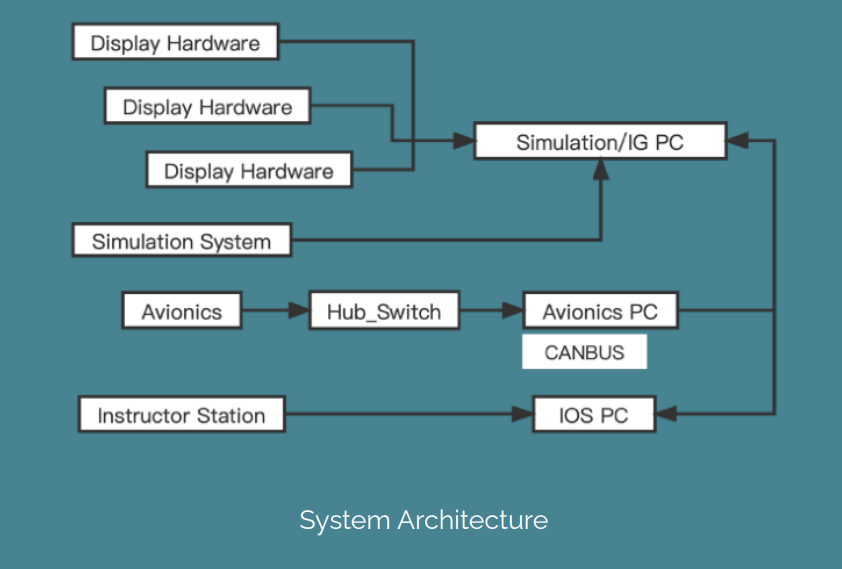
Flight Controls
WB737NG simulator features advanced control loading technology, including a 3-channel system that accurately replicates the hydraulic feeling of a real aircraft.
The flight control of the WB737 simulator is a well-developed and reliable system, having undergone thousands of hours of testing and fine-tuning to replicate
the authentic hydraulic sensations of an actual aircraft. It generates dynamic force feedback under various scenarios and features a mechanically-linked stick shaker, a separate adjustable rudder pedal with toe brakes, and a steering column. High-grade aluminum alloy is used for all mechanical components, ensuring both lightweight and durable construction.
Image Generator
Multiple Image Generation systems are available for WB737. Together we choose the system which suits customer’s needs the most.

AFT Cabin
The WB737NG simulator aft cabin is designed to comply with various certification regulations and offers an enclosed instructor area that enables instructors and students to concentrate on their training sessions. Equipped with a touchscreen IOS operation system, observer and instructor seats, USB chargers, emergency stops, and printers, our simulator provides a comprehensive solution for flight schools and ATOs. With all your needs taken care of, it’s a complete turnkey solution for your training needs.
Quick Access Recorder
QAR is a device used in both real aircraft to record flight data for easy and efficient analysis. In a flight simulator, the QAR functions similarly to its counterpart in an actual aircraft, capturing various flight parameters and performance data during simulation sessions.
QAR is a plug-in program to WB737NG simulator IOS system. This interface can be customized according to customer requirements, supporting 3D scene playback of all recorded content and third-person perspective playback of videos. The instructor station can also facilitate training record playback, and recorded results can be copied onto portable storage devices.

